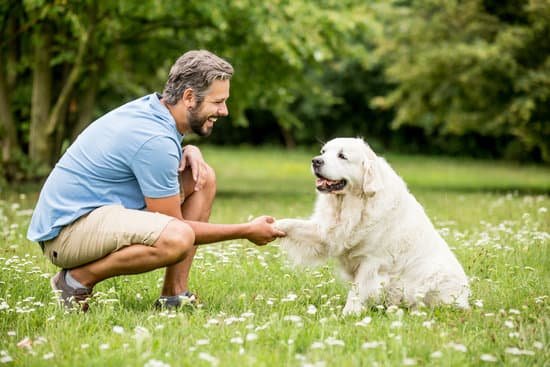What is recall dog training and why is it important? Recall dog training, also known as the “come when called” command, is a crucial aspect of a dog’s obedience and safety. This training teaches a dog to respond promptly and reliably when called by its owner, whether at home, in public, or in emergency situations.
Recall dog training is essential for every dog owner to ensure that their canine companion can be safely and effectively controlled in any environment. Without proper recall training, a dog may wander away, get into dangerous situations, or cause disruptions in public spaces. It also provides peace of mind for pet owners, knowing that they can easily call their dog back to them when needed.
To achieve successful recall dog training, it is important to understand the basic principles and choose the right training method for your specific dog breed and individual temperament. Additionally, being aware of common mistakes in recall training and implementing tips for success are key components of mastering this essential skill for every pet parent. This article will delve into these aspects in detail to provide a comprehensive guide for understanding recall dog training.
Importance of Recall Dog Training
Recall dog training is an essential aspect of responsible pet ownership and is crucial for maintaining the safety of your dog in various environments. This section will explore the importance of recall dog training and why it is vital for all dog owners to prioritize this type of training.
Safety and Control
The primary reason why recall dog training is so important is for the safety and control of your furry friend. Whether you are at the park, the beach, or simply out for a walk, having a reliable recall command can prevent your dog from running into dangerous situations such as traffic, encountering aggressive dogs, or getting lost in unfamiliar areas.
Bonding and Trust
Another key aspect of recall dog training is the opportunity it provides for bonding and building trust between you and your canine companion. When your dog learns to respond to your recall command, it strengthens the bond between both of you and establishes a level of trust that is essential for a harmonious relationship.
Easier Management
Moreover, recall training makes it easier to manage your dog in everyday situations. Whether you need to call them back during playtime, put them on a leash when necessary, or redirect their attention from something potentially harmful, having a reliable recall command simplifies management and ensures a more enjoyable experience for both you and your pet.
Basic Principles of Recall Dog Training
Recall dog training is the process of teaching a dog to come when called, regardless of distractions or distance. It is an essential skill for all dogs to learn, as it can be a matter of safety if a dog is able to return to its owner when necessary. This training involves both verbal cues and hand signals, and should be practiced in various environments and situations to ensure the dog’s responsiveness.
There are a few basic principles that are important to keep in mind when it comes to recall dog training:
- Consistency: Using the same cue and hand signal every time you call your dog back will help them understand what is being asked of them.
- Positive reinforcement: Rewarding your dog with praise, treats, or toys when they come to you will encourage them to repeat this behavior in the future.
- Patience: Recall training takes time and effort, so it’s important to remain patient and consistent throughout the process.
In addition to these principles, it’s also crucial for owners to understand their individual dog’s motivation and drives. Some dogs may be food-motivated, while others might respond better to play or affection. Understanding what motivates your dog will help you tailor your recall training approach for the best results.
Choosing the Right Training Method for Recall
When it comes to choosing the right training method for recall, it is important to consider the individual needs and personality of your dog. There are various approaches to recall training, including using treats, toys, or positive reinforcement. It’s essential to select a method that aligns with your dog’s learning style and motivators.
One popular method for recall training is known as “positive reinforcement.” This involves rewarding your dog with praise, treats, or playtime when they respond correctly to your recall command. Positive reinforcement is effective because it creates a strong association between obeying the command and receiving a reward.
Another approach to recall training is utilizing “clicker training.” Clicker training involves using a small device that makes a clicking sound to mark the exact moment your dog performs the desired behavior. The click is followed by a treat or reward, reinforcing the behavior. This method can be particularly effective for teaching precise behaviors such as coming when called.
When deciding on a training method for recall, it’s important to remember that consistency and patience are key. Additionally, some dogs may respond better to certain methods than others, so be open to trying different approaches until you find what works best for your furry friend.
| Recall Training Method | Description |
|---|---|
| Positive Reinforcement | Rewarding dog with praise, treats, or playtime |
| Clicker Training | Using a clicking sound followed by a treat or reward |
Common Mistakes in Recall Dog Training
When it comes to recall dog training, there are several common mistakes that many dog owners make. These mistakes can hinder the progress of the training and may lead to frustration for both the dog and the owner. It’s important to be aware of these common pitfalls so that you can avoid them and ensure a successful recall training experience for your furry friend.
Not Starting Early Enough
One common mistake in recall dog training is not starting early enough. Recall training should begin as soon as you bring your new puppy home. This is an essential skill that every dog should learn, and starting early will make the process much easier. Waiting until your dog is older and has developed bad habits can make it much more challenging to train them effectively.
Inconsistency
Consistency is key when it comes to recall training, but many owners make the mistake of being inconsistent in their approach. This can confuse the dog and make it difficult for them to understand what is expected of them. It’s important to use consistent commands, rewards, and timing when working on recall with your dog.
Using Punishment
Another common mistake in recall training is using punishment as a way to enforce the behavior. This can have negative effects on the bond between you and your dog, as well as their willingness to come when called. Instead of punishing your dog for not responding to a recall command, focus on using positive reinforcement techniques to encourage the desired behavior.
By being mindful of these common mistakes in recall dog training, you can set yourself and your furry companion up for success in mastering this important skill. Understanding these pitfalls will help you navigate through the challenges that may arise during recall training, leading to a stronger bond between you and your beloved pet.
Tips for Successful Recall Training
Recall dog training is a critical skill for any pet owner. This training teaches your dog to come back to you when called, no matter the distractions or environment. Here are some tips for successful recall training:
1. Start Early: Begin recall training as soon as you bring your puppy home. The earlier you start, the easier it will be to instill this behavior in your dog.
2. Use High-Value Rewards: When training your dog to come when called, use high-value treats or rewards that your dog loves. This will motivate them to respond to your recall command.
3. Practice in Different Environments: It’s important to practice recall training in different environments and with various distractions. Start in a quiet space and gradually move to more distracting areas, such as a park or busy street.
4. Be Consistent: Consistency is key in recall training. Always use the same command and reward your dog every time they come back to you.
5. Avoid Negative Reinforcement: Never punish your dog when they come back to you, even if they took longer than expected. Using negative reinforcement can lead to reluctance or fear of returning when called.
6. Use a Long Line: If your dog tends to ignore your recall command, consider using a long line during training sessions. This allows you to gently guide them back when they don’t respond quickly.
By following these tips, you can successfully train your dog on recall commands and enjoy peace of mind knowing that they will return when called – regardless of the situation.
Real-Life Applications of Recall Dog Training
Recall dog training is not just a luxury for pet owners who want to show off their well-behaved dogs; it is an essential skill that could potentially save your dog’s life. In real-life situations, recall training can ensure that your dog comes back to you on command, even in the midst of distractions or dangerous situations.
Whether you are at the park, near a busy street, or encountering other dogs and people, having a reliable recall can prevent accidents and keep your furry friend safe.
One real-life application of recall training is during off-leash outings. When your dog has mastered recall training, they can be given the freedom to roam off-leash in safe areas such as designated dog parks or fenced-in spaces. This allows them to exercise and explore while still being under your control. Additionally, recall training can be crucial in emergency situations when your dog may need to come back immediately for their safety or the safety of others.
In addition to safety benefits, recall training also enhances the overall bond between you and your canine companion. The trust that is built through consistent and successful recall training can strengthen the relationship between you and your dog, leading to improved communication and an increased sense of security for both parties.
| Benefits of Recall Training | Examples |
|---|---|
| Improved safety in various environments | Off-leash outings, emergency situations |
| Enhanced bond with your dog | Increased trust and improved communication |
Troubleshooting Recall Training Issues
Recall dog training can be a challenging process for both the dog and the owner. Despite best efforts, there may be instances where the training does not go as smoothly as planned. When faced with issues during recall training, it is important to identify the root cause of the problem and address it effectively.
One common issue encountered in recall dog training is distractions. Dogs are naturally curious and easily tempted by new sights, sounds, and smells in their environment. When working on recall, it is crucial to gradually increase distractions to help the dog build up its focus and listening skills. Additionally, using high-value treats or rewards during training sessions can also help to keep the dog’s attention when faced with distractions.
Another challenge in recall training is inconsistency. Inconsistent commands or reinforcement can confuse the dog and hinder its progress in learning to come when called. It is essential for owners to maintain a consistent approach in their training techniques and ensure that all family members or handlers are on the same page when it comes to using specific commands and reinforcing good behavior.
When facing difficulties in recall training, it is important for owners to remain patient, persistent, and positive. Rushing through the training process or using harsh methods can have a negative impact on the dog’s willingness to respond to recall commands. By understanding common issues and implementing effective troubleshooting strategies, owners can work towards successful recall dog training that strengthens their bond with their pet.
Conclusion
In conclusion, mastering recall dog training is essential for every dog owner to ensure the safety, well-being, and control of their furry companion. Understanding recall dog training involves teaching your dog to come when called, even in distracting or potentially dangerous situations. This is crucial for off-leash activities and preventing your dog from running away or getting into harm’s way.
The importance of recall dog training cannot be emphasized enough. It not only provides a sense of security and peace of mind for the owner but also allows the dog to enjoy more freedom and flexibility in their daily activities. Whether it’s playing at the park, hiking in the woods, or simply being able to walk off-leash, a well-trained recall can make all these experiences more enjoyable for both you and your pet.
To successfully master recall dog training, it’s important to understand the basic principles and choose the right training method. Additionally, being aware of common mistakes and implementing helpful tips can greatly improve your training process.
With dedication, patience, and consistency, you can overcome any issues that arise during the training process and achieve a reliable recall response from your beloved pup. So remember, with the right approach and techniques, recalling your dog will become second nature for both you and your furry friend.
Frequently Asked Questions
How Do You Teach a Dog to Recall?
Teaching a dog to recall involves using positive reinforcement, such as treats or praise, when they come back to you after being called. Start in a quiet, distraction-free area and gradually increase the level of distraction as the dog gets better at recalling.
How Long Does It Take for a Dog to Learn Recall?
The time it takes for a dog to learn recall can vary depending on the individual dog and the consistency of training. Some dogs may pick up on recall quickly within a few weeks, while others may take longer. It’s important to be patient and consistent with training.
What Are Examples of Recall Words for Dogs?
Examples of recall words for dogs include “come,” “here,” or “return.” It’s important to choose one word and stick with it consistently during training so that the dog associates that word with coming back to you. Using a positive tone of voice when saying the recall word can also help reinforce its meaning for the dog.

Welcome to the blog! I am a professional dog trainer and have been working with dogs for many years. In this blog, I will be discussing various topics related to dog training, including tips, tricks, and advice. I hope you find this information helpful and informative. Thanks for reading!





